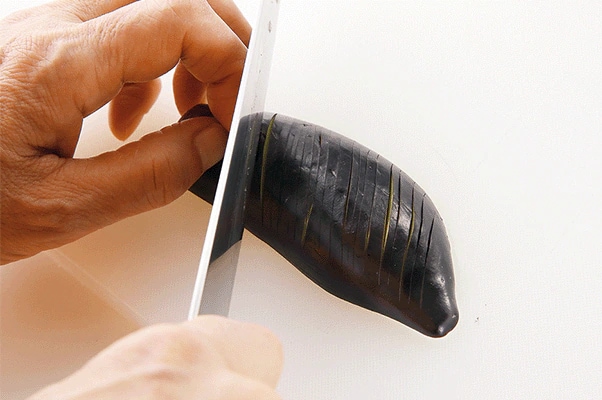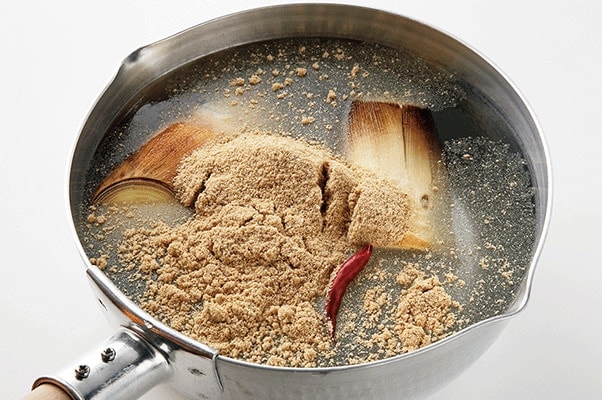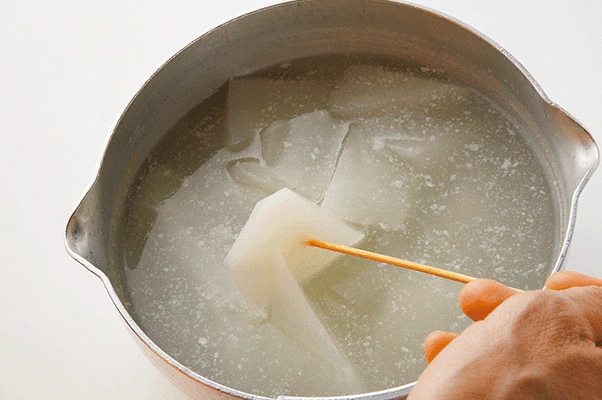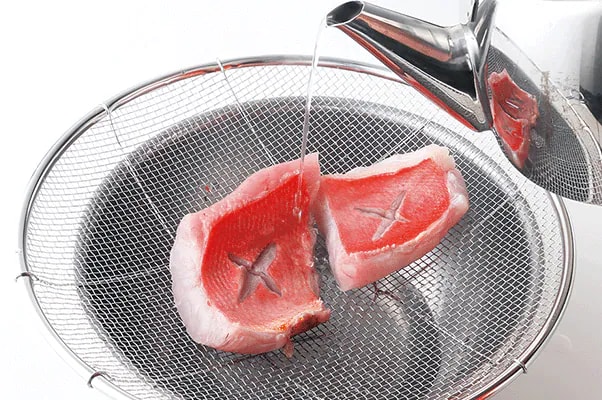Parboiling is a basic food preparation technique in Japanese cooking, intended to elicit clean flavors and remove unsavory smells from ingredients. In this second article on parboiling, we focus on daikon and pork. Parboiling removes the distinctive smell of daikon and helps it absorb flavor; parboiling pork not only eliminates its gamy smell, but extracts aku and excess fat as well.
Daikon
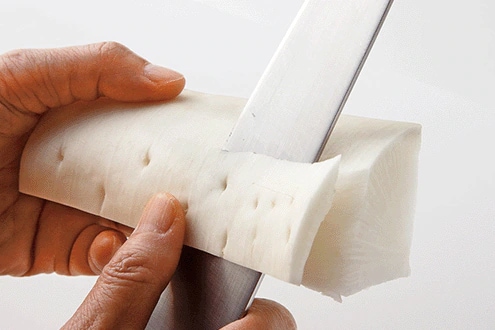
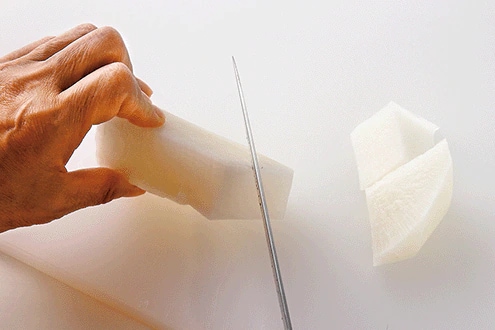
- 1Take a daikon roughly 12 cm / 5 in. diameter. Cut it 20 cm / 8 in. in length, and then into lengthwise quarters. Thickly peel skin*1, then cut into random wedges.
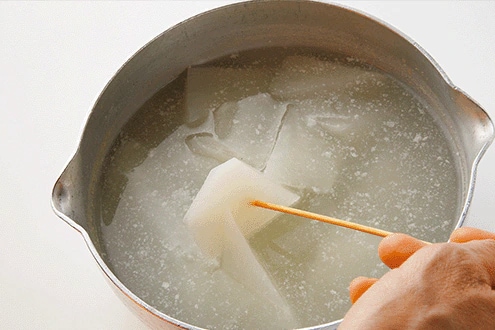
- 2Place the wedges in a pot and add just enough rice water*2 to cover; bring to a boil, then reduce to low and simmer for about 15 minutes until daikon is soft and easily pierced with a skewer, as shown below.
- 3Remove from heat, rinse daikon with cold water and pat dry.
- *1The remaining daikon peels can be thinly sliced and sautéed to make kimpira dishes or pickled to make Japanese tsukemono.
- *2Water used to rinse rice prior to cooking. If rice water is unavailable, plain water may be substituted.
Pork shoulder
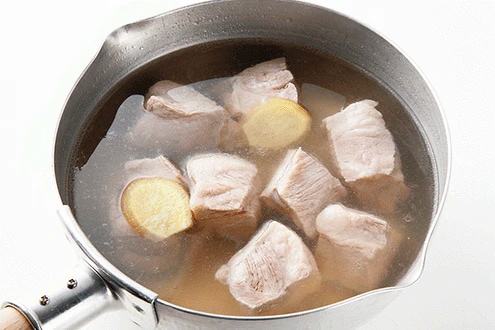
- 1Cut pork shoulder into bite-size pieces.
- 2Place pork and a few slices of ginger in a pot, adding just enough water to cover. Bring to a boil, reduce to low and simmer for about 15 minutes.
- 3Remove from heat and drain. Rinse the meat with cold water and pat dry.
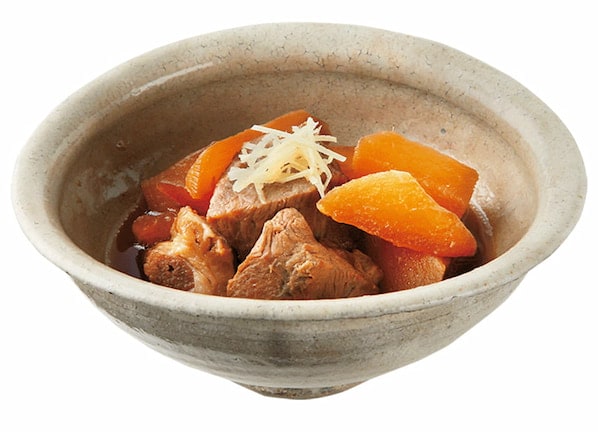
Vol. 36

